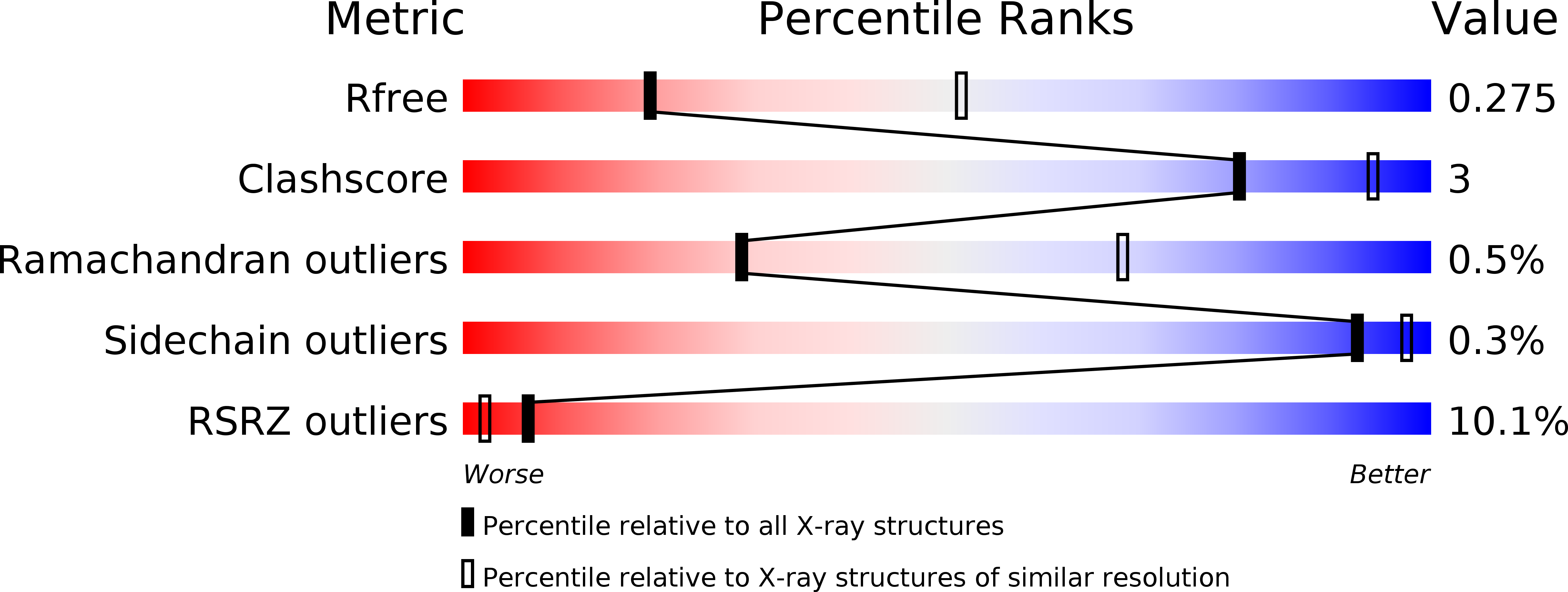Genetic and structural studies of RABL3 reveal an essential role in lymphoid development and function.
Zhong, X., Su, L., Yang, Y., Nair-Gill, E., Tang, M., Anderton, P., Li, X., Wang, J., Zhan, X., Tomchick, D.R., Brautigam, C.A., Moresco, E.M.Y., Choi, J.H., Beutler, B.(2020) Proc Natl Acad Sci U S A 117: 8563-8572
- PubMed: 32220963
- DOI: https://doi.org/10.1073/pnas.2000703117
- Primary Citation of Related Structures:
6VIH, 6VII, 6VIJ, 6VIK - PubMed Abstract:
The small GTPase RABL3 is an oncogene of unknown physiological function. Homozygous knockout alleles of mouse Rabl3 were embryonic lethal, but a viable hypomorphic allele ( xiamen [ xm ]) causing in-frame deletion of four amino acids from the interswitch region resulted in profound defects in lymphopoiesis. Impaired lymphoid progenitor development led to deficiencies of B cells, T cells, and natural killer (NK) cells in Rabl3 xm/xm mice. T cells and NK cells exhibited impaired cytolytic activity, and mice infected with mouse cytomegalovirus (MCMV) displayed elevated titers in the spleen. Myeloid cells were normal in number and function. Biophysical and crystallographic studies demonstrated that RABL3 formed a homodimer in solution via interactions between the effector binding surfaces on each subunit; monomers adopted a typical small G protein fold. RABL3 xm displayed a large compensatory alteration in switch I, which adopted a β-strand configuration normally provided by the deleted interswitch residues, thereby permitting homodimer formation. Dysregulated effector binding due to conformational changes in the switch I-interswitch-switch II module likely underlies the xm phenotype. One such effector may be GPR89, putatively an ion channel or G protein-coupled receptor (GPCR). RABL3, but not RABL3 xm , strongly associated with and stabilized GPR89, and an N -ethyl- N -nitrosourea (ENU)-induced mutation ( explorer ) in Gpr89 phenocopied Rabl3 xm .
Organizational Affiliation:
Center for the Genetics of Host Defense, University of Texas Southwestern Medical Center, Dallas, TX 75390-8505.














